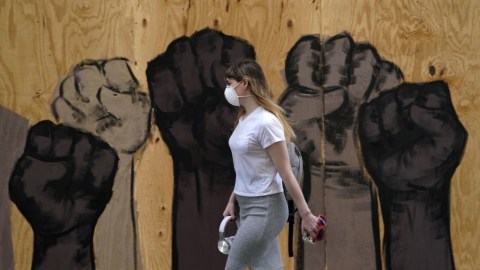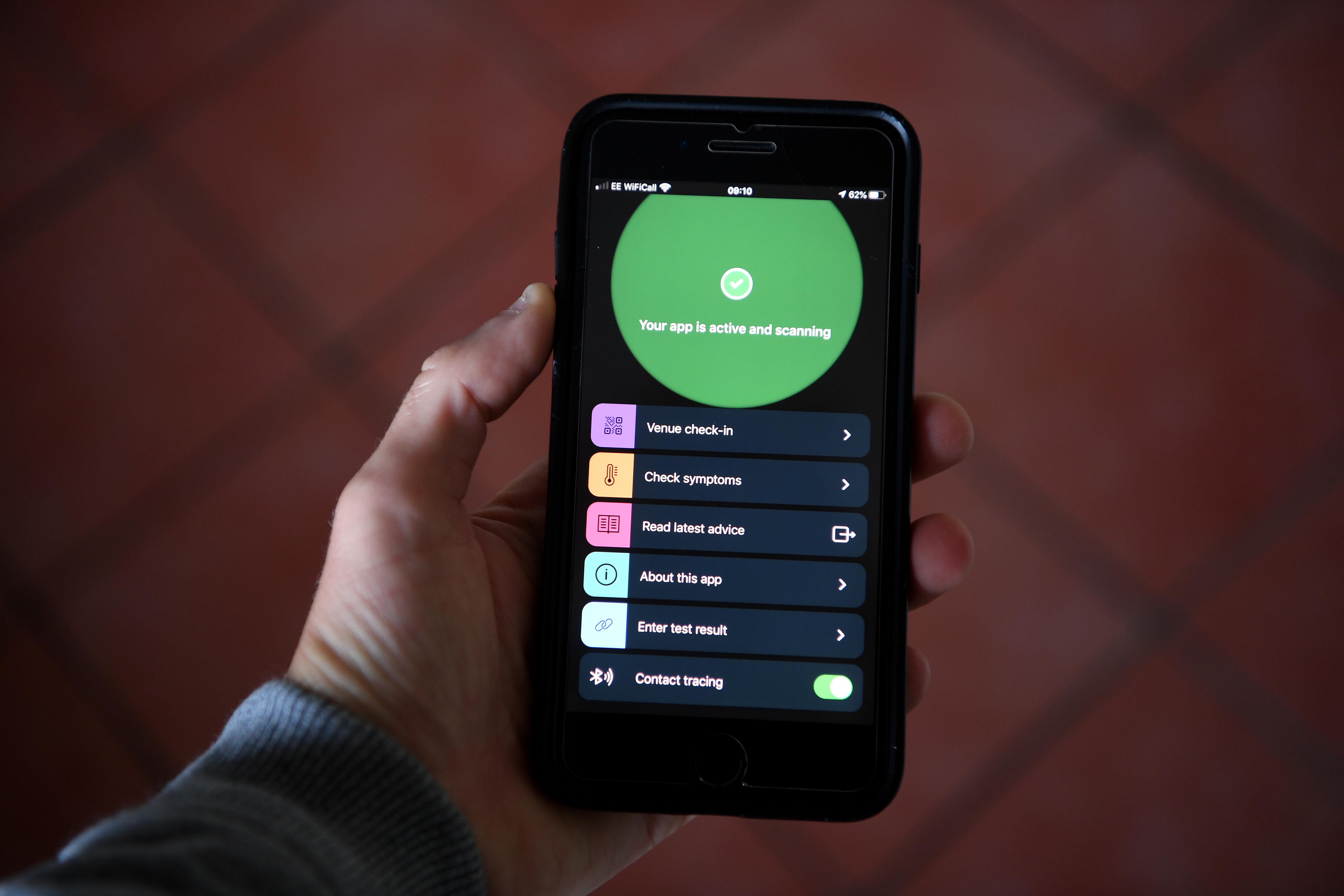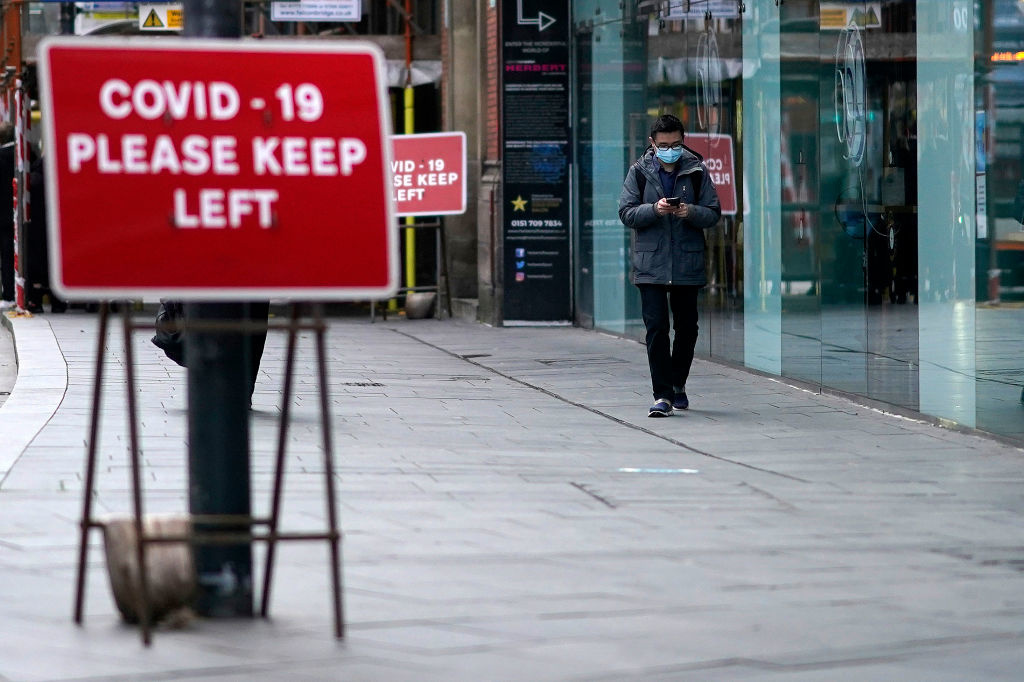Texas A&M study verifies the importance of wearing masks

Photo by Timothy A. Clary / AFP via Getty Images
- A new research article concludes face masks reduced the number of infections by 78,000 in Italy and 66,000 in New York City.
- The team writes that social distancing, isolation, and quarantining are not enough to stop the spread of COVID-19.
- Making face masks part of the partisan culture war is not helping educate the public on virus transmission.
Pascal’s wager has been on my mind.
At the risk of infuriating decision theorists, let’s simplify the French mathematician’s wager from the perspective of the faithful: it’s better to believe in God and be wrong than to not believe and be wrong. No harm comes to believers that discover there is no afterlife (well, don’t discover). Nonbelievers have some explaining to do if there is.
Let’s reframe Pascal’s wager in light of the pandemic. If you wear a mask and you’re wrong that it protects against the virus, you’re still going to get sick. The upside: if you’re right, you prevent disease transmission. On the other side, refusing masks certainly does not prevent transmission. If masks are useless, no foul. But if you’re wrong, well, welcome to America.
I’ve been wrong, many times. Here’s one example: before this year, I didn’t think a pandemic could be so heavily politicized. Sure, there’s precedent. I falsely assumed we’d evolved as a culture. Yet wearing a mask has become a symbol of fear and submission, regardless of how many times medical experts tell us masks are a protective measure that slows transmission so we don’t overwhelm hospitals.
Dr. Vin Gupta: ‘We Need Mandatory Masks’ To Reopen | MTP Daily | MSNBCwww.youtube.com
Conflicting messages aren’t helping. The toxic combination of researchers and institutions sharing unvetted findings and media outlets more concerned with breaking headlines than honoring the slow process of clinical research is adding fuel to this rampant fire.
A recent research article, led by Texas A&M University professor Renyi Zhang and published in PNAS, focuses on three COVID-19 epicenters: China, Italy, and New York City. The team concludes face masks reduced the number of infections by 78,000 in Italy and 66,000 in New York City.
“This inexpensive practice, in conjunction with social distancing and other procedures, is the most likely opportunity to stop the COVID-19 pandemic. Our work also highlights that sound science is essential in decision-making for the current and future public health pandemics.”
Contributing author Mario Molina, a co-recipient of the 1995 Nobel Prize in Chemistry, says wearing a mask prevents droplets from reaching uninfected persons. He notes that droplets aren’t confined to a six-foot radius; they can last in the atmosphere for tens of minutes and travel tens of feet.
Indoor conditions appear to increase the likelihood of transmission. Here in Los Angeles, gyms are reopening during the worst week of infections to date. As two mechanical engineers that specialize in HVAC systems write, while wearing PPE can be helpful, the best means for avoiding transmission is staying out of environments without natural ventilation. Being in a closed environment for more than 15 minutes with other people greatly increases the risk of infection. They conclude,
“The evidence is strong that for the foreseeable future, substituting parks, backyards or even gym driveways will be a reasonably safe way to enjoy exercise with others, while indoor workouts will remain high risk until either the risk of exposure to infection can be eliminated, or effective engineering controls can be implemented.”

Customers, some wearing PPE (personal protective equipment), of a face mask or covering as a precautionary measure against COVID-19, stand in the queue to enter the Apple store, re-opened after being made to close due to the COVID-19 lockdown, at Covent Garden in London on June 15, 2020 as some non-essential retailers reopen from their coronavirus shutdown.Photo by Tolga Akmen/AFP via Getty Images
Of course, indoor congregation is sometimes unavoidable. In such situations, Zhang feels that mitigations such as social distancing, isolation, and quarantine are not enough to stop the rate of infection.
“We conclude that wearing of face masks in public corresponds to the most effective means to prevent interhuman transmission, and this inexpensive practice, in conjunction with extensive testing, quarantine, and contact tracking, poses the most probable fighting opportunity to stop the COVID-19 pandemic, prior to the development of a vaccine.”
With nine states reporting record highs yesterday—the day Mike Pence published an op-ed in the Wall Street Journal congratulating the administration for “winning the fight” against the virus—Dr. Sanjay Gupta pushed back against the many falsities in Pence’s editorial. We might think we’re over with this virus, but it’s nowhere near through with us.
Sadly, due to lack of national leadership, wearing a mask is a wager each one of us must make on our own. As Zhang and team point out, the data are clear. The time has come to go all-in or fold.
—
Stay in touch with Derek on Twitter, Facebook and Substack. His next book is “Hero’s Dose: The Case For Psychedelics in Ritual and Therapy.”





